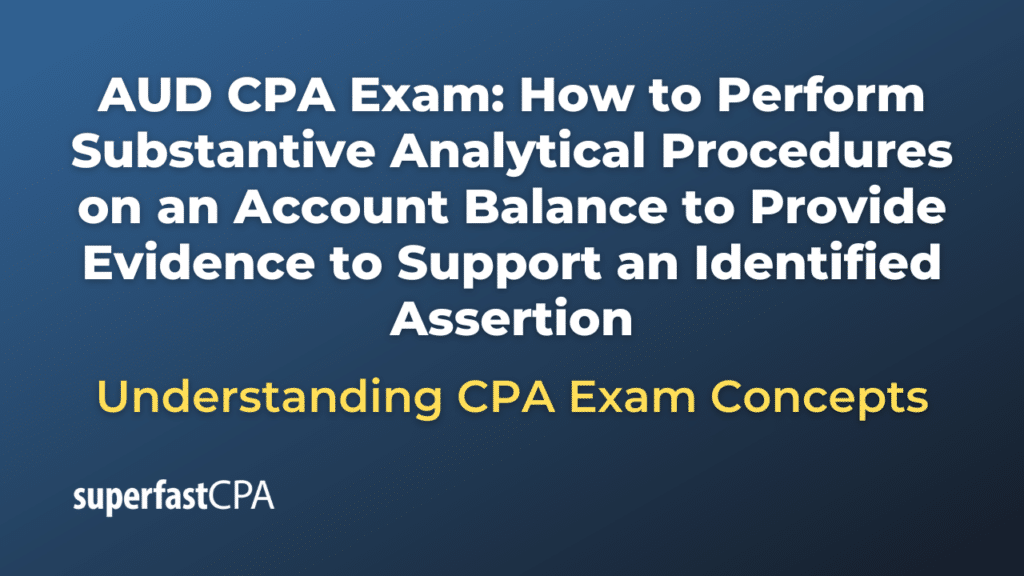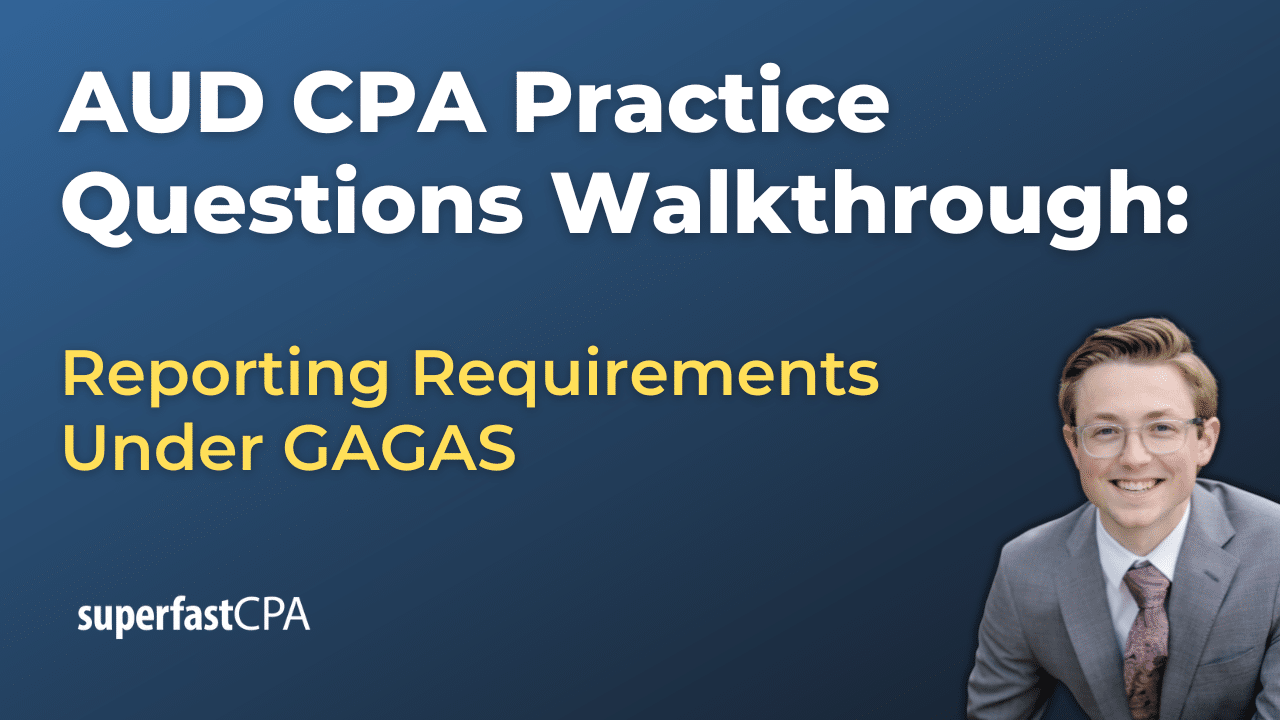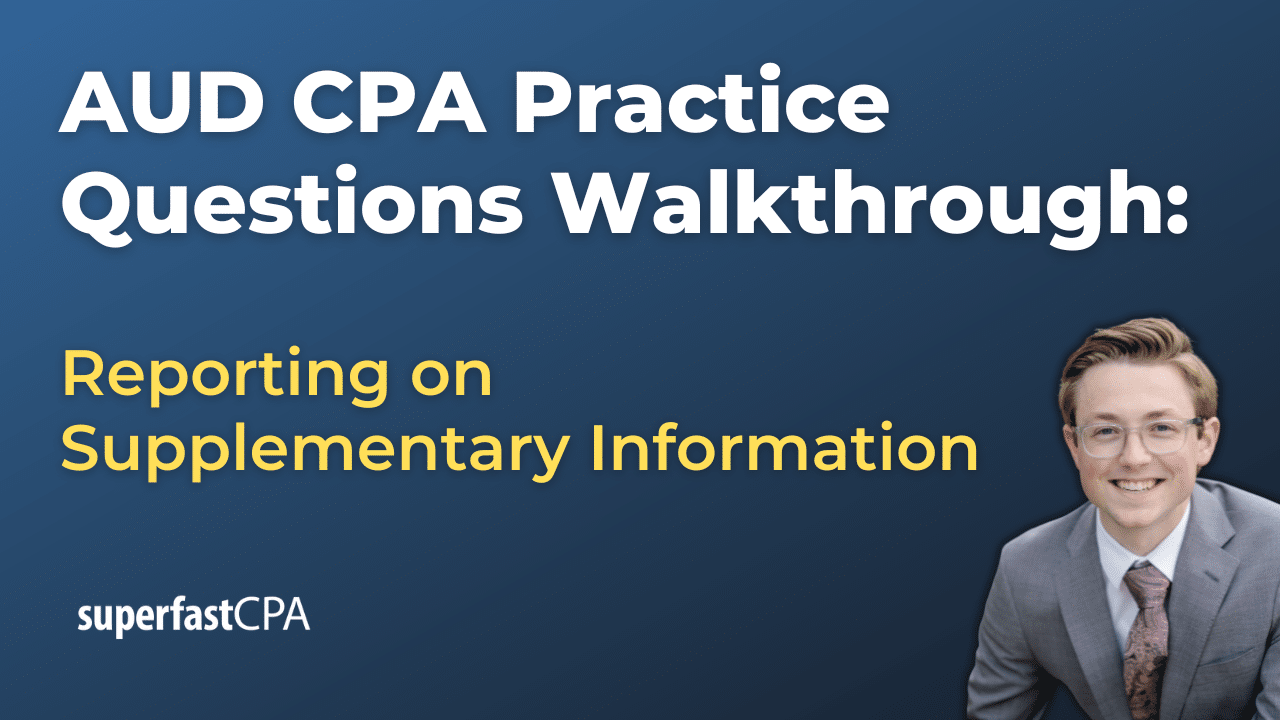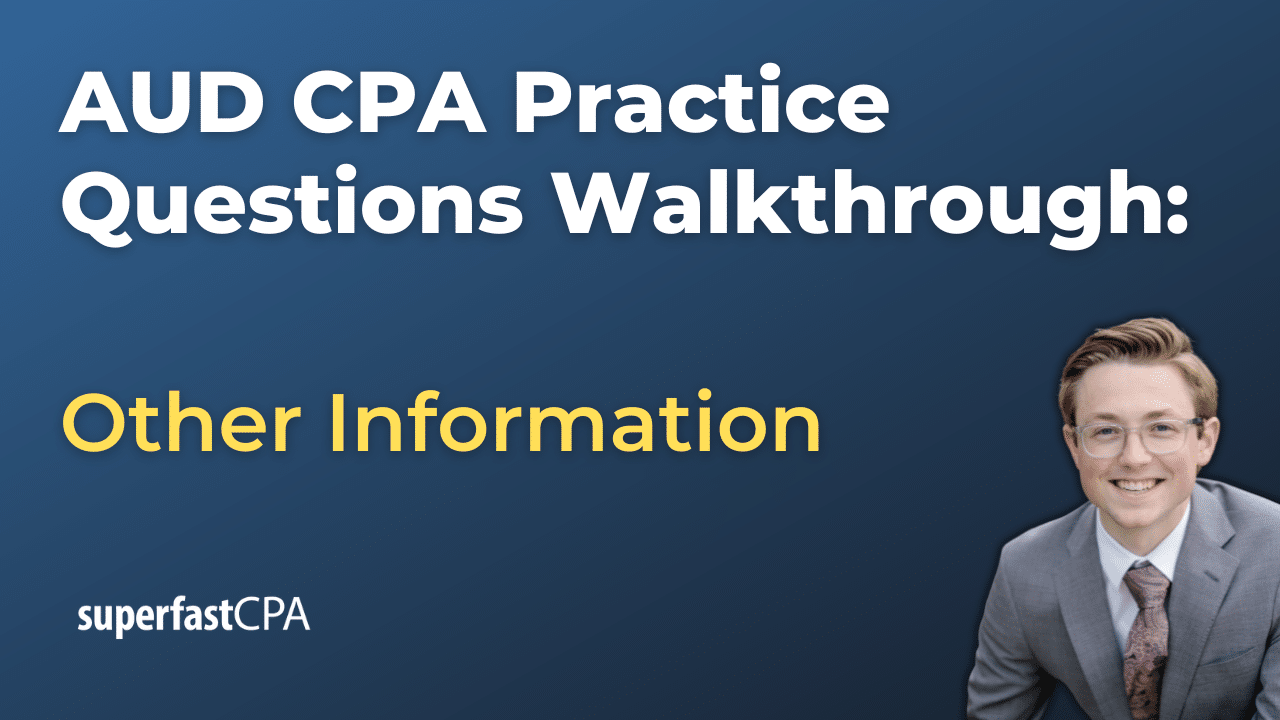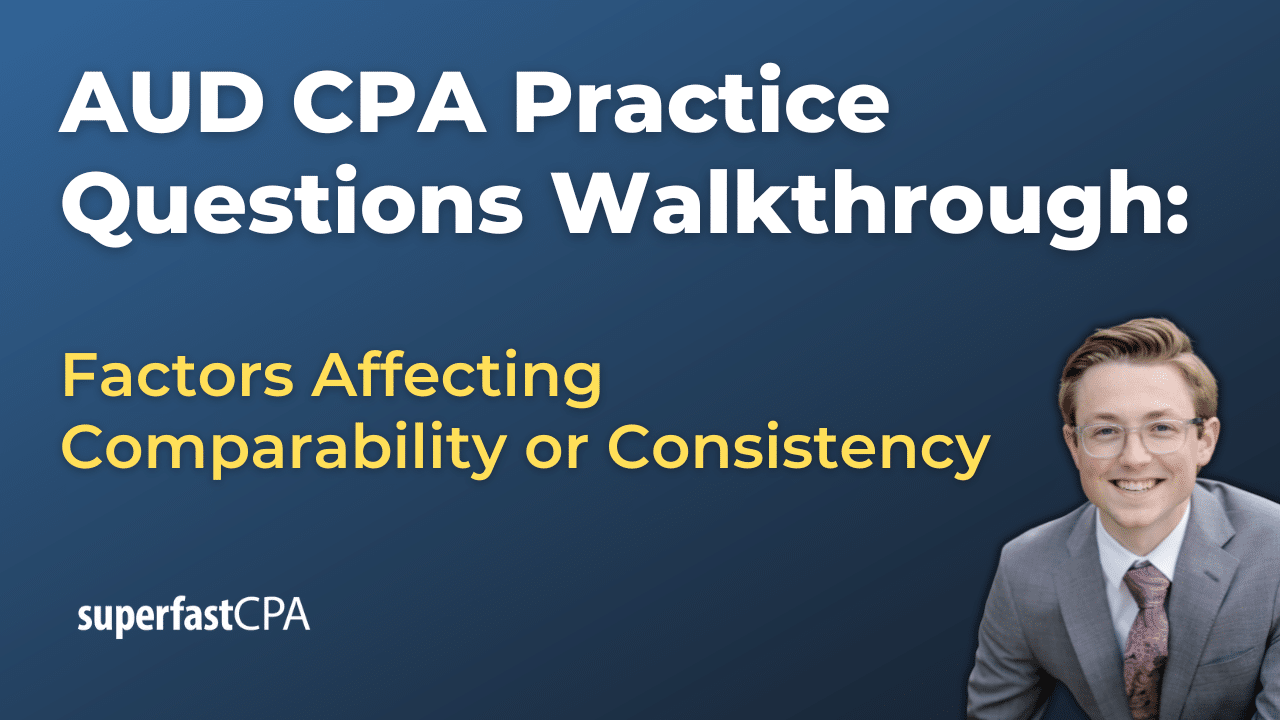Introduction
Purpose of the Article
In this article, we’ll cover how to perform substantive analytical procedures on an account balance to provide evidence to support an identified assertion. Substantive analytical procedures are a crucial component of the audit process, providing auditors with a means to evaluate the reasonableness of financial information through the examination of relationships between financial and non-financial data. These procedures are vital because they allow auditors to gather evidence that supports the accuracy of account balances and transactions, helping to ensure that the financial statements are free from material misstatement.
In auditing, the concept of assertions plays a central role. Assertions are representations by management, embedded in the financial statements, regarding the recognition, measurement, presentation, and disclosure of financial information. Substantive analytical procedures are designed to test these assertions by comparing recorded amounts with independently derived expectations. By doing so, auditors can identify potential discrepancies that may indicate errors or fraud, thus reinforcing the reliability of the financial statements.
This article aims to provide a comprehensive guide for performing substantive analytical procedures on account balances, with a particular focus on how these procedures can be used to provide evidence supporting identified assertions. Whether you are a CPA candidate preparing for the AUD exam or a practicing auditor looking to enhance your understanding of analytical procedures, this guide will offer valuable insights and practical steps to ensure that your audit work is both effective and thorough.
What are Substantive Analytical Procedures?
Substantive analytical procedures are a type of audit procedure used by auditors to assess the reasonableness of account balances and other financial data by analyzing relationships among both financial and non-financial information. These procedures differ from other audit methods, such as tests of details, which involve examining individual transactions or balances directly. Instead, substantive analytical procedures focus on broader patterns and trends, leveraging the relationships between various data points to identify anomalies or confirm expected results.
For example, an auditor might perform a trend analysis to compare current year sales with prior year sales, adjusted for changes in market conditions or company growth. If the results align with expectations, this consistency provides evidence supporting the accuracy of the recorded sales figures. Conversely, if there is a significant, unexplained variance, it may prompt further investigation.
The role of substantive analytical procedures in the audit process is to complement other substantive testing methods, offering a different lens through which to evaluate the financial statements. These procedures can be particularly powerful when the auditor has a strong understanding of the client’s industry and business operations, as this context allows for more accurate and insightful analyses. When effectively applied, substantive analytical procedures not only enhance the auditor’s ability to detect material misstatements but also contribute to a more efficient audit by potentially reducing the need for extensive tests of details.
By integrating substantive analytical procedures into the audit process, auditors can achieve a more balanced and comprehensive approach to gathering audit evidence, thereby increasing the overall quality and reliability of their audit opinions.
Understanding the Concept of Assertions in Auditing
What are Assertions?
Assertions are fundamental concepts in auditing that represent the implicit or explicit claims made by management regarding the financial statements. These assertions relate to the recognition, measurement, presentation, and disclosure of financial information. Auditors rely on these assertions to guide their audit procedures and to evaluate the validity of the financial statements.
There are several key types of assertions that auditors must consider:
- Existence: This assertion relates to whether the assets, liabilities, and equity interests reported in the financial statements actually exist at a given date. For example, an assertion of existence for inventory means that the inventory listed on the balance sheet physically exists in the company’s warehouses.
- Completeness: Completeness refers to whether all transactions and events that should be recorded in the financial statements have been included. For instance, in the context of liabilities, the completeness assertion would ensure that all obligations have been captured and no liabilities are omitted.
- Accuracy: This assertion focuses on whether the financial information has been recorded accurately. It involves ensuring that amounts and other data have been recorded appropriately in accordance with applicable financial reporting frameworks.
- Valuation: Valuation pertains to whether assets, liabilities, and equity interests are included in the financial statements at appropriate amounts. For example, this would include evaluating whether inventory is valued at the lower of cost or market value.
- Rights and Obligations: This assertion confirms whether the entity holds or controls the rights to assets and that liabilities are the obligations of the entity. For instance, the rights and obligations assertion would ensure that the company’s reported accounts receivable truly belong to the company and are collectible.
- Presentation and Disclosure: This assertion deals with whether the components of the financial statements are properly classified, described, and disclosed. It ensures that the financial statements are presented in accordance with the relevant accounting standards and that all necessary disclosures are made.
Understanding these assertions is crucial because they form the basis upon which auditors design their procedures and tests. By considering each assertion, auditors can target specific risks associated with the financial statements and develop appropriate audit strategies to address those risks.
Importance of Assertions in the Audit Process
Assertions play a critical role in shaping the design and implementation of audit procedures. Each assertion represents a different dimension of risk, and auditors must tailor their procedures to address these risks effectively. For example, if the existence assertion for inventory is deemed to be at high risk, the auditor may place greater emphasis on physical inventory counts and verification of ownership.
The importance of assertions is also closely linked to the audit risk model. The audit risk model is a framework that auditors use to assess the overall risk of material misstatement in the financial statements. This model is typically expressed as:
Audit Risk (AR) = Inherent Risk (IR) x Control Risk (CR) x Detection Risk (DR)
Assertions directly influence inherent risk and control risk, which are key components of the audit risk model. Inherent risk relates to the susceptibility of an assertion to a material misstatement, assuming no related controls are in place. Control risk is the risk that a misstatement related to an assertion could occur and not be prevented or detected by the entity’s internal controls.
By identifying the relevant assertions for each account balance or transaction, auditors can assess where the risks of material misstatement are most significant. This assessment then guides the auditor in determining the nature, timing, and extent of audit procedures needed to obtain sufficient and appropriate audit evidence. For example, higher inherent and control risks associated with the valuation assertion for complex financial instruments might lead the auditor to perform more extensive substantive testing or to use specialists.
Assertions are the foundation upon which the entire audit process is built. They guide auditors in identifying and responding to risks, ensuring that the audit is both effective and efficient in providing reasonable assurance that the financial statements are free from material misstatement.
Overview of Substantive Analytical Procedures
Definition and Objectives
Substantive analytical procedures are audit techniques used to evaluate financial information by analyzing plausible relationships among both financial and non-financial data. These procedures aim to achieve two main objectives:
- Identifying Anomalies: Substantive analytical procedures are designed to highlight unusual fluctuations or unexpected relationships in financial data that may indicate potential misstatements. By identifying these anomalies, auditors can focus their attention on areas of higher risk, leading to more targeted and effective audit procedures.
- Providing Audit Evidence: When substantive analytical procedures produce results that are consistent with expectations, they provide persuasive evidence that the financial statements are free from material misstatement. This helps auditors to corroborate management’s assertions and to reach conclusions about the reliability of the financial information being audited.
Types of Analytical Procedures
There are several types of substantive analytical procedures that auditors can use, each with a specific purpose and application:
- Ratio Analysis: Ratio analysis involves comparing relationships between different financial statement items (e.g., current assets to current liabilities, gross margin ratio). Auditors use ratios to assess the reasonableness of account balances and to detect trends or patterns that may indicate a misstatement.
- Trend Analysis: Trend analysis examines changes in account balances or financial metrics over time. Auditors look for significant deviations from historical patterns that cannot be explained by changes in the business or economic environment. For example, a sudden increase in sales without a corresponding increase in production costs may warrant further investigation.
- Reasonableness Tests: Reasonableness tests involve estimating an account balance based on expected relationships or external benchmarks. For example, an auditor might estimate interest expense based on the company’s outstanding debt and average interest rate. If the recorded interest expense significantly deviates from the auditor’s estimate, it may suggest an error.
- Regression Analysis: Regression analysis is a statistical method used to analyze the relationship between one dependent variable and one or more independent variables. In auditing, this technique can be used to predict account balances based on historical data and known factors. For instance, an auditor might use regression analysis to predict sales based on advertising expenditure and market conditions.
When to Use Substantive Analytical Procedures
Substantive analytical procedures are most effective in situations where relationships among data are stable and predictable. These procedures are particularly useful in the following scenarios:
- Large, Homogeneous Populations: When auditing large populations of transactions that are similar in nature, such as revenue or payroll, substantive analytical procedures can efficiently provide assurance over the entire population by focusing on overall patterns and trends rather than individual transactions.
- High-Level Comparisons: Substantive analytical procedures are well-suited for high-level comparisons, such as comparing financial metrics with industry benchmarks or historical performance. These comparisons can quickly identify areas where more detailed testing may be necessary.
- Preliminary and Final Audit Phases: Substantive analytical procedures can be effectively used during both the preliminary and final stages of the audit. In the preliminary phase, they help to identify areas of potential risk and to plan further audit procedures. In the final phase, they provide a check on the overall reasonableness of the financial statements before the auditor issues their opinion.
Factors That Determine the Appropriateness of Substantive Analytical Procedures
Several factors influence the appropriateness and effectiveness of substantive analytical procedures:
- Nature of the Account or Assertion: Certain accounts or assertions lend themselves better to analytical procedures. For example, income statement accounts, which reflect activity over a period, are often more suitable for trend analysis than balance sheet accounts, which reflect a point in time.
- Availability and Reliability of Data: The effectiveness of substantive analytical procedures depends on the availability and reliability of the data used to perform the analysis. Reliable data sources, such as audited prior-year financial statements or industry reports, enhance the credibility of the results.
- Complexity of the Entity’s Operations: For entities with complex operations or significant changes in business strategy, the relationships between financial data points may be less predictable, making substantive analytical procedures less effective. In such cases, auditors may need to supplement analytical procedures with more detailed substantive tests.
- Materiality and Audit Risk: The auditor’s assessment of materiality and audit risk also determines the extent and nature of substantive analytical procedures. For higher-risk areas or where materiality thresholds are lower, auditors may need to perform more detailed testing to obtain sufficient audit evidence.
Substantive analytical procedures are a powerful tool in the auditor’s arsenal, offering an efficient way to assess the reasonableness of financial information and to identify areas where further audit work may be necessary. By understanding when and how to apply these procedures, auditors can enhance the quality and effectiveness of their audits.
Steps to Perform Substantive Analytical Procedures
Step 1: Establishing an Expectation
The first step in performing substantive analytical procedures is to establish an independent expectation of the account balance or financial information being tested. This expectation serves as a benchmark against which the actual recorded amounts will be compared. The accuracy and reliability of this expectation are crucial, as they directly influence the effectiveness of the procedure.
How to Develop an Independent Expectation of the Account Balance
Developing an independent expectation involves analyzing various factors that could influence the account balance. Auditors should consider the following when developing an expectation:
- Historical Data: One of the most common methods for developing expectations is to analyze the entity’s historical financial data. This involves reviewing trends from prior periods, making adjustments for any known changes, and applying these trends to the current period.
- Budgeted or Forecasted Amounts: If the entity has reliable budgets or forecasts, these can be used as a basis for expectations. However, auditors must assess the accuracy and reasonableness of these forecasts to ensure they provide a valid basis for comparison.
- Industry Benchmarks: Comparing the entity’s performance to industry standards or averages can also help in forming expectations. This is particularly useful for revenue, cost of goods sold, and other metrics that are closely tied to industry conditions.
- Non-Financial Information: Sometimes, non-financial information, such as production volumes, sales orders, or customer data, can provide valuable insights. For example, if sales are directly correlated with customer foot traffic, an increase in traffic should correspond with an increase in sales.
Sources of Information for Creating Expectations
The reliability of the expectation depends on the sources of information used. Common sources include:
- Audited financial statements from prior years.
- Industry reports and market analyses.
- Internal management reports and forecasts.
- External economic data, such as inflation rates or commodity prices.
- Operational data, such as production or sales statistics.
By gathering information from these diverse sources, auditors can create a robust and defensible expectation that will help in identifying any significant deviations during the analysis.
Step 2: Identifying the Assertion to be Tested
After establishing an expectation, the next step is to identify the specific assertion(s) that the substantive analytical procedure will test. Assertions are the claims made by management regarding various aspects of the financial statements, such as the existence, completeness, accuracy, or valuation of an account balance.
How to Select the Appropriate Assertion(s) for Testing
The selection of the appropriate assertion depends on the nature of the account balance and the risks associated with it. Auditors should consider the following:
- Risk Assessment: Determine which assertions are most likely to be misstated based on the auditor’s understanding of the entity and its environment. For example, the valuation assertion might be at risk for complex financial instruments, while the completeness assertion might be more relevant for revenue.
- Account Characteristics: Certain assertions are inherently more relevant to specific types of accounts. For instance, existence is a critical assertion for assets like inventory or fixed assets, while accuracy is particularly important for revenue and expense accounts.
- Audit Objectives: Align the selected assertion with the overall audit objectives. If the primary goal is to verify the accuracy of a revenue figure, the focus should be on the accuracy assertion.
Importance of Aligning the Analytical Procedure with the Identified Assertion
Aligning the analytical procedure with the identified assertion is crucial for obtaining relevant and persuasive audit evidence. For example, if the assertion being tested is the completeness of liabilities, the analytical procedure should be designed to detect any omitted liabilities. Misalignment between the procedure and the assertion can lead to ineffective audit work and potentially missed misstatements.
Step 3: Calculating the Expected Account Balance
Once the assertion has been identified, the auditor must calculate the expected account balance. This involves applying techniques that incorporate the data and assumptions gathered in the earlier steps.
Techniques for Calculating Expectations
Several techniques can be used to calculate the expected account balance:
- Mathematical Models: Simple mathematical models, such as percentages or ratios, can be applied to historical data to calculate expectations. For example, if gross margin has historically been stable at 40%, the auditor can multiply the expected sales figure by this margin to estimate the cost of goods sold.
- Historical Averages: Averages from prior periods can serve as a straightforward method for setting expectations, especially in stable environments. For example, if the entity’s monthly utility expenses have consistently averaged $10,000, this figure can be used as an expectation.
- Trend Analysis: Analyzing trends over several periods and projecting these trends into the current period can help establish expectations. For instance, if sales have grown by 5% annually, this growth rate can be applied to last year’s sales to estimate the current year’s sales.
Adjustments for Seasonality, Economic Conditions, and Other Factors
When calculating expectations, it’s important to adjust for factors that could influence the account balance, such as:
- Seasonality: Certain businesses experience seasonal fluctuations, such as retail companies that see higher sales during the holiday season. Expectations should account for these patterns.
- Economic Conditions: Changes in economic conditions, such as a recession or inflation, can impact financial data. Adjusting for these factors ensures that expectations remain realistic.
- Business Changes: Any significant changes in the business, such as the introduction of a new product line or a change in pricing strategy, should be considered when calculating expectations.
By using these techniques and making appropriate adjustments, auditors can develop a precise and reliable expectation of the account balance, setting the stage for an effective comparison with the recorded amounts.
Step 4: Comparing the Actual Account Balance to the Expected Balance
After establishing an expectation for the account balance, the next step is to compare the actual recorded balance with this expected balance. This comparison is essential for identifying any variances that may indicate potential misstatements.
Methods for Comparing and Analyzing Variances
There are several methods auditors can use to compare the actual account balance to the expected balance:
- Simple Difference Analysis: This method involves subtracting the expected balance from the actual balance to calculate the variance. A positive or negative difference indicates whether the actual amount is higher or lower than expected.
- Percentage Analysis: In percentage analysis, the auditor calculates the variance as a percentage of the expected balance. This helps to contextualize the difference, especially when dealing with large account balances where even small absolute differences can be material.
- Trend Analysis: For accounts where trends are important, auditors can compare the actual trend over time with the expected trend. Deviations from the expected trend can highlight areas that may require further investigation.
- Ratio Analysis: Comparing key financial ratios to expected ratios can also be effective, especially when the account balance is influenced by relationships with other accounts. For example, comparing the actual gross margin ratio to the expected ratio can reveal inconsistencies in revenue or cost of goods sold.
Determining When Variances Are Material and Require Further Investigation
Once the variance has been calculated, the auditor must assess its materiality. A variance is considered material if it is large enough to potentially influence the decisions of users of the financial statements.
To determine whether a variance is material, auditors should consider:
- Quantitative Thresholds: Auditors often set specific materiality thresholds based on the size of the entity, the account balance, and the overall financial statements. Variances that exceed these thresholds typically require further investigation.
- Qualitative Factors: Even if a variance is below the quantitative threshold, it may still be material if it involves significant transactions, unusual items, or areas of high audit risk.
- Nature of the Account: Materiality can also depend on the nature of the account. For example, a small variance in cash might be more concerning than a similar variance in an expense account due to the risk of fraud.
If a variance is deemed material, the auditor must proceed to investigate the cause and corroborate any explanations provided by management.
Step 5: Investigating and Corroborating Variances
When a material variance is identified, the auditor must take steps to understand the reasons behind the discrepancy and ensure that the explanation is valid and supported by evidence.
Steps to Take When Discrepancies Are Identified
- Discuss with Management: The first step is often to discuss the variance with management. Management may provide explanations for the discrepancy, such as changes in business conditions, accounting errors, or unusual transactions.
- Review Supporting Documentation: Auditors should request and review documentation that supports management’s explanation. For example, if management claims that the variance is due to an increase in sales, the auditor should examine sales records, contracts, and other relevant documents.
- Perform Additional Substantive Procedures: Depending on the nature of the variance, the auditor may need to perform additional procedures to gather more evidence. This could include recalculating estimates, confirming transactions with third parties, or performing physical inspections.
Use of Additional Procedures to Corroborate Explanations for Variances
Auditors must be cautious not to rely solely on management’s explanations. Corroborative evidence is necessary to substantiate the claims. Some additional procedures that can be used include:
- Recalculations: If the variance is due to an accounting estimate, the auditor should independently recalculate the estimate using the same assumptions to verify its accuracy.
- Third-Party Confirmations: For accounts involving transactions with external parties (e.g., receivables, payables), auditors can obtain confirmations directly from those parties to verify the accuracy of the recorded amounts.
- Analytical Reviews of Related Accounts: Sometimes, variances in one account may be linked to changes in another. For example, a variance in inventory might be linked to a corresponding variance in cost of goods sold. Analyzing related accounts can provide additional context and evidence.
By thoroughly investigating and corroborating variances, auditors can determine whether the discrepancy is reasonable or if it indicates a potential misstatement that needs to be addressed.
Step 6: Documenting the Analytical Procedures
Proper documentation is a critical component of performing substantive analytical procedures. It ensures that the audit process is transparent, that conclusions are well-supported, and that the work can be reviewed and understood by others, including regulatory bodies or other auditors.
Best Practices for Documenting the Process, Findings, and Conclusions
- Document the Expectations and Methods Used: Auditors should clearly document the methods and assumptions used to establish expectations, including any data sources and calculations. This provides a foundation for understanding how the expected balance was determined.
- Record the Comparison and Variance Analysis: The results of the comparison between the actual and expected balances, including any variances identified, should be meticulously documented. This includes the specific method used to calculate the variance (e.g., percentage difference, ratio analysis).
- Detail the Investigation Process: When variances are identified, auditors should document the steps taken to investigate them, including discussions with management, review of supporting documentation, and any additional procedures performed.
- Summarize Conclusions and Impact on the Audit: The final documentation should include a summary of the auditor’s conclusions regarding the variances, including whether they were satisfactorily explained and corroborated. If a variance led to further audit procedures or adjustments, these actions should also be recorded.
- Ensure Compliance with Audit Standards: Documentation should comply with the relevant auditing standards and the firm’s policies. This includes ensuring that the documentation is sufficient to enable an experienced auditor, having no previous connection with the audit, to understand the nature, timing, and extent of the audit procedures performed, the results of those procedures, and the audit evidence obtained.
By adhering to these best practices, auditors can ensure that their analytical procedures are properly documented, which enhances the reliability of the audit and provides a clear audit trail for review.
Examples of Substantive Analytical Procedures
Example 1: Accounts Receivable
Performing Ratio Analysis to Support the Valuation Assertion
When auditing accounts receivable, one of the primary assertions that auditors need to verify is valuation. This assertion ensures that receivables are reported at their net realizable value, meaning that they are appropriately valued after considering potential bad debts. Ratio analysis can be an effective substantive analytical procedure to support the valuation assertion.
Steps in the Process:
- Calculate the Accounts Receivable Turnover Ratio: This ratio measures how often a company collects its average accounts receivable balance over a period. The formula is:
\(\text{Accounts Receivable Turnover Ratio} = \frac{\text{Net Credit Sales}}{\text{Average Accounts Receivable}} \) - Compare to Industry Benchmarks or Historical Data: Once the turnover ratio is calculated, compare it to industry benchmarks or the company’s historical data. A significantly lower turnover ratio may indicate issues with the collection of receivables or a higher likelihood of bad debts, suggesting that the accounts receivable balance may be overstated.
- Analyze the Aging of Receivables: In conjunction with the turnover ratio, auditors can perform an aging analysis to assess the collectibility of receivables. Receivables that are significantly past due may require an adjustment for bad debts, impacting the valuation assertion.
- Conclusion: If the turnover ratio and aging analysis indicate that receivables are turning over more slowly than expected, the auditor may conclude that the valuation assertion is at risk. This would prompt further investigation, such as reviewing the allowance for doubtful accounts or testing specific receivable balances.
Example 2: Revenue Recognition
Trend Analysis to Support the Completeness Assertion
Revenue recognition is a critical area in financial reporting, and auditors often focus on the completeness assertion to ensure that all revenue transactions that should be recorded have been recorded. Trend analysis can be particularly effective in identifying unusual patterns or gaps in revenue that may suggest incomplete recording.
Steps in the Process:
- Review Historical Revenue Trends: Begin by examining revenue trends over multiple periods, such as monthly or quarterly sales figures. Plot these figures on a graph to visually identify any anomalies or significant deviations from the trend.
- Compare Against Industry Trends: Compare the company’s revenue trend with industry data or economic indicators. For example, if the industry is experiencing growth but the company’s revenue is flat or declining, it may suggest that not all revenue is being recorded, potentially compromising the completeness assertion.
- Adjust for Seasonality: If the company’s business is seasonal, adjust the trend analysis to account for expected fluctuations. This ensures that seasonal variations are not mistaken for issues with completeness.
- Conclusion: If the trend analysis reveals periods with unexpected revenue declines or gaps, the auditor should investigate further. This might involve reviewing sales cut-off procedures, examining sales transactions around period end, or comparing revenue to corresponding expense accounts to identify any discrepancies.
Example 3: Inventory Valuation
Reasonableness Tests to Support the Accuracy and Valuation Assertions
Inventory is often a significant balance sheet item, and auditors need to verify both the accuracy and valuation of this account. Reasonableness tests can help support these assertions by assessing whether the recorded inventory values are consistent with external benchmarks and internal expectations.
Steps in the Process:
- Estimate Inventory Turnover: Calculate the inventory turnover ratio, which measures how quickly inventory is sold and replaced during the period. The formula is:
\(\text{Inventory Turnover Ratio} = \frac{\text{Cost of Goods Sold}}{\text{Average Inventory}} \) - Compare with Industry Averages: Compare the calculated turnover ratio with industry averages. A significantly lower turnover ratio may indicate obsolete or slow-moving inventory, which could be overvalued on the balance sheet, impacting the valuation assertion.
- Perform Gross Profit Analysis: Another reasonableness test involves analyzing the gross profit margin. If the margin is unusually high or low compared to prior periods or industry standards, it could indicate issues with inventory valuation. For example, an abnormally high gross profit margin might suggest that inventory costs are understated.
- Adjust for External Factors: Consider any external factors, such as changes in market conditions or supplier pricing, that could impact inventory valuation. If there are significant changes, the auditor should assess whether the inventory has been adjusted accordingly.
- Conclusion: If reasonableness tests indicate potential issues with inventory accuracy or valuation, the auditor should perform additional procedures. This could include verifying physical inventory counts, reviewing costing methods, or testing the application of lower of cost or market valuation.
These examples demonstrate how substantive analytical procedures can be tailored to specific account balances and assertions, helping auditors to identify potential misstatements and ensure the accuracy and reliability of the financial statements. By applying these techniques, auditors can gather persuasive evidence and make informed conclusions about the financial health of the entity.
Challenges and Considerations
Limitations of Substantive Analytical Procedures
While substantive analytical procedures are powerful tools in the audit process, they are not without their limitations. Understanding when these procedures may not be sufficient is crucial for auditors to avoid drawing incorrect conclusions.
When These Procedures May Not Be Sufficient
- Lack of Detailed Information: Substantive analytical procedures often rely on aggregated data, which may not provide the detailed information needed to detect subtle or complex misstatements. For example, unusual transactions affecting specific items may be obscured within broader trends.
- High Variability: In environments where there is significant variability in data due to factors such as market volatility or operational changes, it may be difficult to establish reliable expectations. In such cases, the results of analytical procedures might not be as meaningful or conclusive.
- Complex Transactions: When auditing complex financial instruments, revenue recognition policies, or other intricate transactions, substantive analytical procedures may not capture all relevant nuances. Detailed tests of transactions may be necessary to ensure all aspects of the transaction are accurately represented in the financial statements.
- Inadequate for Detecting Fraud: Substantive analytical procedures are generally more effective at identifying errors than fraud. Fraudulent activities, especially those involving collusion or management override, may not produce patterns or relationships that are detectable through analytical procedures alone.
Given these limitations, auditors must carefully consider the appropriateness of substantive analytical procedures in the context of the specific audit objectives and risks.
Common Pitfalls
There are several common pitfalls that auditors may encounter when performing substantive analytical procedures. Being aware of these can help auditors avoid errors and improve the reliability of their conclusions.
Errors in Expectation Development
- Inaccurate Assumptions: Developing expectations based on inaccurate assumptions or outdated information can lead to incorrect conclusions. For example, assuming that last year’s sales growth will continue at the same rate without considering changes in market conditions could result in misleading expectations.
- Overreliance on Historical Data: While historical data is valuable, relying too heavily on it without considering current economic or operational changes can lead to faulty expectations. Auditors must ensure that their expectations are relevant to the current period.
- Ignoring External Factors: Failing to consider external factors, such as economic trends or regulatory changes, can result in expectations that do not accurately reflect the entity’s current situation. These factors should be integrated into the expectation development process.
Misinterpretation of Variances
- Overlooking Materiality: Not all variances are significant. Auditors may fall into the trap of investigating immaterial differences that do not impact the financial statements as a whole, leading to inefficiencies in the audit process.
- Misjudging Causal Relationships: Incorrectly interpreting the cause of a variance can lead auditors to draw false conclusions. For instance, a variance in inventory might be mistakenly attributed to changes in purchasing patterns when it is actually due to errors in recording inventory movements.
- Confirmation Bias: Auditors may unconsciously seek out explanations that confirm their preconceptions, leading to a misinterpretation of variances. It is important to approach variances with professional skepticism and consider alternative explanations.
Mitigating Risks
To address the limitations and pitfalls associated with substantive analytical procedures, auditors can implement several strategies to mitigate risks and enhance the effectiveness of their audit work.
Using a Combination of Analytical Procedures and Tests of Details
- Complementary Approaches: Substantive analytical procedures should be used in conjunction with other audit methods, such as tests of details. This combination allows auditors to verify the results of analytical procedures and obtain more comprehensive audit evidence. For example, after performing trend analysis on revenue, auditors might select specific transactions for detailed testing to confirm the accuracy of the analysis.
- Risk-Based Approach: Tailoring the extent and nature of substantive analytical procedures based on the assessed risk of material misstatement ensures that these procedures are applied where they are most likely to be effective. High-risk areas may require more detailed testing, while lower-risk areas can be adequately addressed through analytical procedures.
Ensuring the Reliability of Underlying Data
- Data Quality Verification: Before performing substantive analytical procedures, auditors must verify the reliability of the underlying data. This includes ensuring that the data is complete, accurate, and relevant. Auditors may need to trace data back to original source documents or perform reconciliations to confirm its accuracy.
- Use of External Benchmarks: Incorporating external benchmarks, such as industry averages or economic indicators, can enhance the reliability of the expectations developed during analytical procedures. These benchmarks provide an independent basis for comparison and help to identify potential misstatements.
- Continuous Monitoring and Adjustment: Analytical procedures should not be static. As new information becomes available during the audit, auditors should be prepared to adjust their expectations and analysis accordingly. This dynamic approach ensures that the procedures remain relevant and effective throughout the audit.
By understanding the challenges associated with substantive analytical procedures and implementing strategies to mitigate these risks, auditors can improve the reliability and effectiveness of their audit work, ultimately providing more accurate and meaningful assurance on the financial statements.
Conclusion
Recap of Key Points
Substantive analytical procedures are an essential part of the audit process, providing a means for auditors to assess the reasonableness of financial information by examining relationships among data. This article has outlined the critical steps involved in performing these procedures, from establishing expectations and identifying the relevant assertions, to comparing actual results with expectations and investigating variances. By effectively applying these procedures, auditors can identify potential misstatements and gather persuasive evidence to support their audit conclusions.
The process of performing substantive analytical procedures involves several key steps:
- Establishing an Expectation: Developing a robust expectation based on reliable data sources such as historical trends, industry benchmarks, and non-financial information.
- Identifying the Assertion to be Tested: Aligning the analytical procedure with the specific assertion being tested to ensure the relevance and effectiveness of the audit work.
- Calculating the Expected Account Balance: Using appropriate techniques and adjusting for factors like seasonality or economic conditions to develop accurate expectations.
- Comparing the Actual Account Balance to the Expected Balance: Identifying and analyzing variances to determine whether they are material and require further investigation.
- Investigating and Corroborating Variances: Conducting a thorough investigation of any significant variances, including corroborating management’s explanations with additional evidence.
- Documenting the Analytical Procedures: Properly documenting the entire process, from the methods used to establish expectations to the final conclusions, ensuring a clear and transparent audit trail.
Final Thoughts
Performing substantive analytical procedures requires a high degree of professional judgment and skepticism. Auditors must be vigilant in their approach, always questioning the reliability of data, the reasonableness of assumptions, and the validity of explanations for variances. This mindset is crucial for detecting potential misstatements, especially those that may be intentionally concealed.
Moreover, the effectiveness of substantive analytical procedures improves with practice and experience. Auditors are encouraged to continually refine their analytical skills, staying updated on new techniques and tools that can enhance their ability to analyze financial information. Through ongoing learning and application, auditors can increase their proficiency in using substantive analytical procedures, ultimately contributing to more effective and reliable audits.
In conclusion, substantive analytical procedures are a powerful audit tool when applied correctly. By following a structured approach and maintaining a skeptical mindset, auditors can leverage these procedures to provide meaningful assurance on the accuracy and completeness of financial statements, thereby fulfilling their role in safeguarding the integrity of financial reporting.

